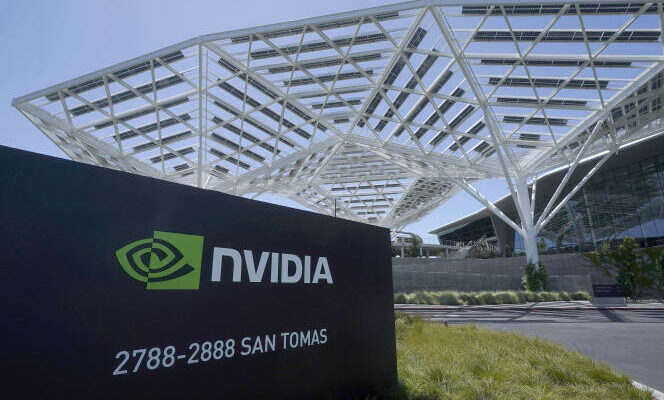UA star can be defined by the light it gives off. This is as true in astronomy as it is in entertainment. No need to have seen her films or listened to her music, a real star, everyone knows her. In the business world, very few companies achieve this fame. The electronics manufacturer Nvidia has entered this very exclusive club.
All stock analysts awaited the publication of its quarterly results with as much anxiety, if not more, than the American inflation or employment figures. Because this company, still unknown to the general public five years ago, represents all the hopes of a new industrial revolution bringing growth for the United States. And these results did not disappoint.
The manufacturer of chips for artificial intelligence announced, Wednesday May 22, a 262% increase in its turnover over its last fiscal quarter, to 26 billion dollars (24 billion euros). A 3.5-fold increase in sales compared to the same period of 2023, which was already up 265% compared to 2022.
Just as spectacular, the company’s net profit amounted, over the same three months, to $15 billion, or a profit margin of more than 57%. And it’s not over, since the founder of Nvidia, the American of Taiwanese origin Jensen Huang, promised that this pace of progress would continue in 2024 and probably the next few years. As a result, the company’s market valuation is expected to rise further above the current $2.3 trillion. Better than Google or Amazon. Like a passing of the baton.
Interconnected world
The first IT revolution was driven, in the 1960s and 1980s, by the hegemony of IBM, that of the microcomputer, between 1980 and 2000, by Microsoft and Intel, and the next, that of the Internet and mobile, by Google and Apple. The age of artificial intelligence will be driven by the duopoly formed by OpenAI and Nvidia.
In the interconnected digital world, the winner takes all, because they set the standard and their investment means make them difficult to catch up with. According to Citi bank analysts, cited by the Financial TimesNvidia’s market share exceeds 80% and would still be more than 60% in 2030. However, it does not manufacture its chips, produced by the Taiwanese TSMC.
Its competitors (AMD, Intel, Qualcomm) and its major clients (Google, Microsoft, Meta or Apple) all work on their own systems. But the software environment that he built over twenty years, called CUDA, will be very difficult to replicate as it is efficient and locks the customer into his habits. Like Google, Microsoft or Apple did with theirs.
You have 10.26% of this article left to read. The rest is reserved for subscribers.
